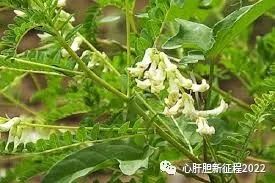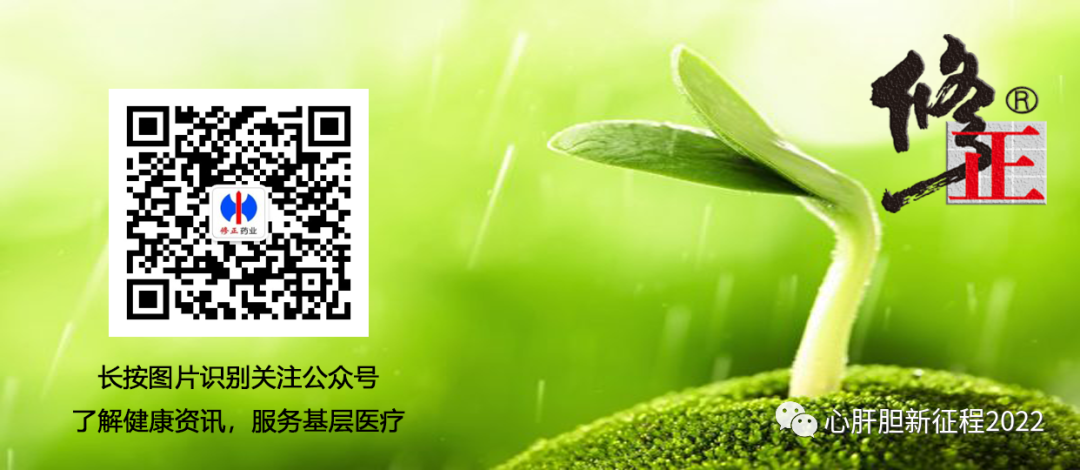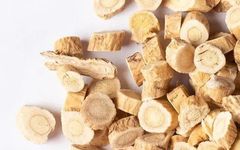
Chinese Herb Name: Huang Qi (Milkvetch Root)
Pinyin: huáng qí
Latin Name: RADIX ASTRAGALI
Aliases
Aliases: Mian Qi, Mian Huang Qi, Huang Shi, Huang Qi, Jian Qi, Jian Huang Qi, Inner Mongolia Huang Qi, Wang Sun, Dai Qi, Dai Shan, Du Shan, Shu Zhi, Bai Ben, Bai Yao Mian, Bai Yao Mian, Tu Shan Bao Zhang Gen, Du Gen, Da Chou, Er Ren Tai, Da You Qi, Meng Qi, Yuan Qi, Hong Lan Qi, Bai Pi Qi, Hei Pi Qi, Mo Jia Huang Qi, Dong Bei Huang Qi, Nei Meng Huang Qi, Chong Zheng Qi, Wu Chuan Qi, Pao Tai Qi, Hun Yuan Qi.
Commercial Name: Bei Huang Qi: Also known as Bei Qi, Dong Bei Huang Qi, Bu Kui Qi, Guan Bu Kui Qi, Guan Qi, Hei Pi Qi. Most are roots of the plant Mo Jia Huang Qi, with a small portion from the plant Nei Meng Huang Qi. Mainly produced in Heilongjiang and Inner Mongolia. High quality. Due to different origins, it is also classified as Ning Gu Ta Qi, Hong Lan Qi, Hei Shi Tan Qi, Zheng Kou Qi, etc.
Prescription Names: Huang Qi, Mian Qi, Mian Huang Qi, Kou Qi, Bei Qi, Sheng Huang Qi, Chao Huang Qi, Zhi Huang Qi, etc.
In prescriptions, Huang Qi, Mian Qi, Mian Huang Qi, Kou Qi, and Bei Qi all refer to Sheng Huang Qi. This is the raw herb, cleaned of impurities, sliced, and used in medicine.
Chao Huang Qi refers to Huang Qi slices stir-fried with bran until deep yellow, then screened and cooled for medicinal use. It enhances the effects of strengthening the spleen and harmonizing the stomach.
Zhi Huang Qi, also known as Honey-fried Huang Qi, is made by mixing Huang Qi slices with honey, stir-frying until not sticky, then cooling for medicinal use. It enhances the effects of tonifying Qi and moistening the lungs.
Pharmacological Discussion
The medicinal history of Huang Qi spans over 2000 years, first recorded in the silk manuscripts unearthed from the Han tomb at Mawangdui, and listed as a superior herb in the Shen Nong Ben Cao Jing. The Ben Cao Gang Mu states, “Qi is long, Huang Qi is yellow, and is named for its tonifying properties…” The Ben Cao Hui Yan states, “Huang Qi tonifies the lungs, strengthens the spleen, stabilizes the exterior, restrains sweating, dispels wind, and detoxifies…” The Ben Cao Feng Yuan states, “Huang Qi can tonify the five organs’ deficiencies, treat pulse stringing with spontaneous sweating, drain yin fire, and eliminate lung heat; if there is no sweating, it will cause sweating, and if there is sweating, it will stop it.”
Chinese pharmacists have inferred and used Huang Qi as a remedy to enhance capacity and resist diseases for over 2000 years. Recently, Western traditional pharmacists have begun to focus on and study Huang Qi for mitigating the side effects of chemotherapy.
1. The Ben Cao discusses Huang Qi: Huang Qi is sweet, slightly warm, with a thin Qi and rich flavor, capable of ascending and descending, the Yang of Yang, and is non-toxic. It specifically tonifies Qi. It enters the channels of the Taiyin hand, Taiyin foot, and Shaoyin hand. Its functions are numerous, but its unique efficacy lies in tonifying blood.
Huang Qi is the sacred herb for tonifying Qi; how can it uniquely tonify blood? Qi is formless, while blood is form. Form cannot be quickly generated; it must rely on formless Qi to produce it. Huang Qi used in conjunction with Dang Gui (Angelica Sinensis) can assist in blood generation. Dang Gui originally can generate blood; why use Huang Qi? It is not known that blood tonics generate blood slowly, while Qi tonics generate blood quickly. Moreover, when Qi and blood tonics are combined, blood receives Qi and generates quickly, so there is no doubt.
2. The famous TCM physician Tao Hongjing said: “Huang Qi first comes from Longbai, Shenyang, yellow-white, sweet and beautiful, now also hard to find.” This refers to wild Huang Qi from Gansu Province. Among the commercial Huang Qi, the wild varieties from Northeast China (Bu Kui Qi, Ning Gu Ta Qi, Zheng Kou Qi) are better, with the best being wild Huang Qi from Gansu. Due to the scarcity of wild varieties, cultivation is widespread across various provinces in China.
Chemical Composition: Contains flavonoids such as calycosin, 3-hydroxy-9,10-dimethoxy-phenanthrene, and also contains astragalosides I, V, III.
Huang Qi contains sucrose, glucuronic acid, Huang Qi polysaccharides A, B, C, D, mucilage, various amino acids, bitter principles, Huang Qi saponins, choline, folic acid, flavonoids, and various trace elements such as selenium, silicon, zinc, cobalt, copper, and molybdenum.
3. Properties and Channel Entry
Properties: Sweet, slightly warm.
Channel Entry: Enters the lungs, spleen, liver, and kidney channels.
4. Main Functions and Indications: Huang Qi benefits Qi, stabilizes the exterior, restrains sweating, promotes muscle regeneration, and facilitates water metabolism to reduce swelling. It is used to treat Qi deficiency fatigue, sinking Qi, chronic diarrhea, prolapse, blood in stool, menorrhagia, spontaneous sweating due to exterior deficiency, difficult-to-heal sores, chronic non-healing ulcers, blood deficiency with sallow complexion, internal heat with thirst, chronic nephritis, proteinuria, diabetes, etc. Zhi Huang Qi benefits Qi and tonifies the middle, while Sheng Huang Qi stabilizes the exterior and promotes muscle regeneration.
5. Medicinal Combinations (Four Main Applications) Tonifying the Middle and Benefiting Qi
(1) For spleen and stomach deficiency, poor appetite, reduced food intake, fatigue, and weakness, it is often used with Dang Shen (Codonopsis), Bai Zhu (Atractylodes), and Shan Yao (Chinese Yam);
(2) For Qi deficiency with sinking, such as prolapse, uterine prolapse, and gastric ptosis, it is often used with Dang Shen, Sheng Ma (Cimicifuga), and Chai Hu (Bupleurum), as in the formula Buzhong Yiqi Tang.
Stabilizing the Exterior and Restraining Sweating
(1) For spontaneous sweating due to exterior deficiency, often used with Bai Zhu and Fang Feng (Siler) to treat spontaneous sweating caused by wind-cold; long-term use will yield results, as in the formula Yu Ping Feng San; it can also be combined with Fu Xiao Mai (Wheat) and Ma Huang Gen (Ephedra Root);
(2) For night sweats due to yin deficiency, it can be used with Sheng Di (Rehmannia) and Mai Dong (Ophiopogon).
Promoting Water Metabolism and Reducing Swelling
(1) For acute nephritis with edema, used for deficiency-type edema due to insufficient Yang, often combined with Fang Ji (Stephania), Fu Ling (Poria), and Bai Zhu, as in the formula Fang Ji Huang Qi Tang;
(2) For chronic nephritis with edema and spleen-kidney deficiency, often used with Dang Shen, Bai Zhu, and Fu Ling.
Promoting Muscle Regeneration and Discharging Pus
(1) For weak Yang Qi, used for sores that do not rupture and penetrate inward, promoting rupture and local action. For carbuncles that do not form heads, often used with Chuan Shan Jia (Pangolin), Zao Jiao Ci (Soapberry), Dang Gui, and Chuan Xiong (Ligusticum);
(2) For sores that have ruptured and do not heal, used for sores that have ruptured for a long time without healing, promoting muscle regeneration and closure, often combined with Jin Hua (Honeysuckle), Zao Jiao Ci, and Di Ding (Dichroa). For clear and thin pus, often used with Dang Shen and Rou Gui (Cinnamon).
Additionally, Huang Qi is also applied in various diseases such as diabetes, sequelae of cerebrovascular accidents, hypertension, rheumatism, and multiple neuritis, myasthenia gravis, etc.
6. Contraindications: It should be avoided in cases of excess exterior pathogens, Qi stagnation with damp obstruction, food accumulation, initial stages of carbuncles or after rupture with heat toxin still present, as well as in cases of yin deficiency with yang excess.
1. Ben Cao Jing Ji Zhu: “Avoid tortoise shell.”
2. Xu Zhi Cai’s Yao Dui: “Avoid tortoise shell and white fresh skin.”
3. Yi Xue Ru Men. Ben Cao: “Avoid in cases of dark and excessive Qi, excess exterior pathogens, and yin deficiency; use with caution against wind.”
4. Ben Cao Jing Shu: “Functions to stabilize the exterior; do not use with exterior pathogens; can assist Qi; do not use with excess Qi; can obstruct; do not use with chest obstruction or food stagnation; can tonify Yang; avoid in cases of excess Yang with yin deficiency; avoid in cases of excess heat in the upper burner and cold deficiency in the lower burner; avoid in patients with excessive anger and liver Qi disharmony; avoid in cases of severe heat in the blood with smallpox.”
5. Yao Pin Hua Yi: “If Qi is excessive, exterior pathogens are strong, and pores are solid, it should be avoided. In cases of stroke with limb paralysis, phlegm obstruction, and Qi closure, it should not be added at all.”
6. Ben Cao Xin Bian: “Avoid in cases of bone steaming, tuberculosis heat, and fullness in the stomach.”
7. Ben Cao Hui Zuan: “Counteracts Li Lu, avoid Wu Ling Zhi and Fang Feng.”


